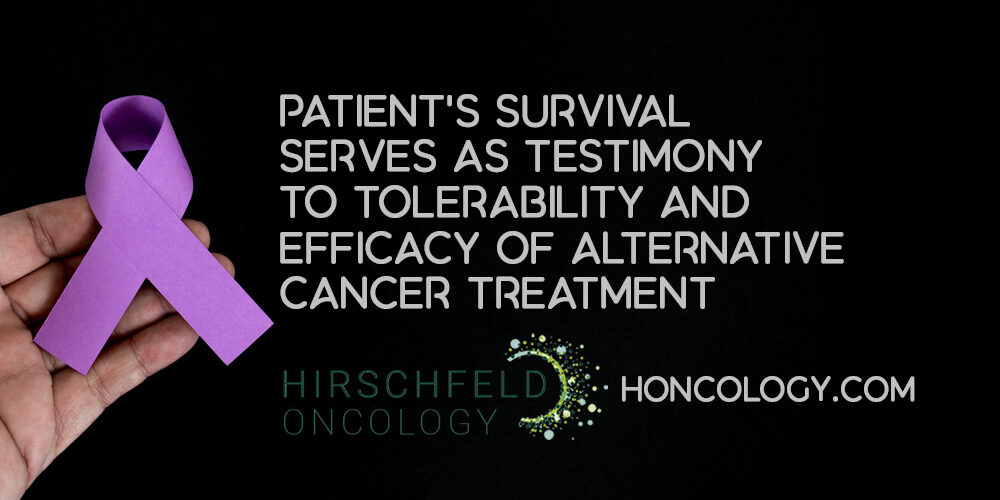The Importance of Patient-Centered Care in Cancer Therapy
Defining Patient-Centered Care in Cancer
Patient-centered care in cancer therapy focuses on tailoring treatment to each patient’s unique needs, values, and preferences. It emphasizes respect for patient choices, effective communication, shared decision-making, and coordination among healthcare providers.
Holistic Approach for Comprehensive Support
This care approach goes beyond treating the cancer itself by addressing the medical, emotional, social, and cultural factors impacting the patient. It includes managing side effects, offering psychosocial and spiritual support, and considering cultural beliefs that influence treatment acceptance.
Engaging Patients in Treatment Planning
Central to patient-centered care is actively involving patients and their families in discussions about diagnosis and therapy options. This collaboration ensures treatment plans reflect patient preferences, improving trust, satisfaction, and adherence while helping patients navigate complex decisions and potential side effects.
By integrating patient engagement with a holistic approach, patient-centered care aims to improve quality of life and clinical outcomes throughout the cancer journey.
Foundations of Patient-Centered Cancer Treatment Planning

What are the key elements of patient-centered cancer treatment planning?
Patient-centered cancer treatment planning revolves around engaging patients and their families as active partners in their care. This collaborative approach ensures that treatment plans are accurate and tailored, taking into account the full spectrum of medical, cultural, and social needs unique to each patient (Patient-centered cancer treatment planning, Patient-centered care benefits, Patient-centered communication in cancer care).
Key elements include:
Engagement of Patients and Families: Encouraging open dialogue about treatment options and personal values allows families to be a part of decisions, fostering confidence and trust (Patient and family engagement in treatment planning, Support services and patient navigators).
Shared Decision Making: Patients participate in choosing among treatments, such as in breast cancer where preferences influence decisions between lumpectomy and mastectomy (Shared decision making in cancer treatment, Patient preferences in breast cancer treatment, Mastectomy vs lumpectomy decision making).
Effective Communication: Clear, respectful, and empathetic conversations ensure patients understand their diagnosis, treatment choices, potential side effects, and next steps (Communication in patient-centered care, Patient-centered communication in cancer care, Improving communication in cancer care.
Care Coordination: Healthcare providers collaborate closely to synchronize appointments, manage symptoms, and minimize treatment disruptions, enhancing continuity of care (Coordination of cancer care, Effective cancer care coordination).
Cultural and Social Considerations: Respecting cultural beliefs and accommodating social circumstances leads to more personalized and acceptable treatment plans (Patient-centered care and culture, Patient-centred care and diverse cancer types).
Tools supporting this patient-centered process include decision aids that clarify options, electronic health records with reminders and checklists, educational videos, and symptom screening instruments (Tools for patient-centered treatment planning, Decision aids in cancer treatment, Electronic health records in treatment planning, Video resources explaining treatment options, Symptom screening tools in cancer care.
Challenges such as patients feeling overwhelmed or providers facing time constraints can be mitigated through provider training and the involvement of patient navigators (Challenges in patient-centered cancer care, Physician time constraints in treatment planning, Training healthcare providers in patient-centered communication, Support services and patient navigators.
This comprehensive, respectful approach underscores patient empowerment and aims to improve satisfaction, adherence, and overall outcomes in cancer care (Patient-centered cancer treatment planning benefits, Patient-centered care benefits.
Balancing Quality of Life and Length of Life: Understanding Patient Preferences

How do cancer patients weigh quality of life versus length of life in treatment decisions?
Cancer patients often face challenging choices between extending their life and maintaining quality of life (QoL). These decisions involve carefully considering potential treatment benefits against side effects and life impacts.
Trade-offs between quality of life and life extension
Many patients are willing to tolerate treatment toxicities to extend survival, especially when prognosis is better. However, those with poor prognosis frequently prioritize QoL over length of life (LoL) to avoid debilitating symptoms and maintain comfort.
Influence of patient age and health status on treatment preferences
Age plays a significant role: older patients often prefer treatments that maintain QoL, reflecting their limited remaining life span and physical status. In contrast, younger patients tend to choose more aggressive therapies to prolong survival. Additionally, patients in better physical condition generally value length of life more, while those with poorer health prioritize quality of life to minimize suffering (research on patient priorities in older cancer patients).
Importance of respecting individual priorities in decision making
Because preferences vary widely and depend on personal values, clinicians must respect patients' unique priorities. Shared decision making in cancer treatment and effective communication in patient-centered care help align treatment plans with what matters most to each patient, ultimately supporting their dignity and well-being during cancer care.
The Role of Supportive Care in Enhancing Patient Well-Being
What is supportive care and how does it improve quality of life during cancer therapy?
Supportive care in cancer focuses on managing the wide range of physical symptoms and side effects caused by the disease and its treatments. Key aspects include relief of pain, nausea, fatigue, and other distressing symptoms, which helps patients maintain comfort and continue treatments with better tolerance. This care goes beyond physical management to include emotional, psychological, and spiritual support, recognizing the holistic needs of patients (Definition of supportive care, Improving Quality of Life for Cancer Patients, Supportive care in cancer).
Management of physical symptoms and treatment side effects
Through interventions like pain management, nutritional support, and symptom control for nausea, fatigue, and cognitive difficulties, supportive care minimizes the impact of cancer and therapy on daily functioning. Techniques range from medication to integrative therapies such as acupuncture and massage, helping patients better cope with physical challenges (Supportive care in cancer treatment, Practical non-pharmacological interventions for cancer patients, Supportive Care Therapies).
Emotional, psychological, and spiritual support
Addressing mental health needs is integral to supportive care. Counseling, cognitive behavioral therapy, support groups, and pastoral care work to alleviate anxiety, depression, fear, and spiritual distress. This comprehensive emotional support preserves hope, resilience, and quality of life throughout the cancer journey (Cognitive behavioral therapy for cancer patients, Hope as a strategy in cancer care, Improving Palliative Care for Cancer).
Integration of supportive and palliative care throughout cancer journey
Supportive care is provided from diagnosis through treatment, survivorship, and even end-of-life stages, overlapping with but distinct from palliative care. Early incorporation improves symptom control, reduces hospitalizations, and enhances patient satisfaction and survival outcomes (early identification of high-risk patients, Improving Quality of Life for Cancer Patients, Supportive care in cancer treatment).
Multidisciplinary team involvement
A coordinated team including oncologists, nurses, social workers, dietitians, pain specialists, mental health professionals, and chaplains collaborate to deliver patient-centered supportive care. This team approach ensures personalized and holistic treatment planning that respects patient values and preferences (Supportive Care Services at Stephenson Cancer Center, Supportive therapy, Effective cancer care coordination.
By combining symptom management, psychosocial care, and coordinated teamwork, supportive care plays a crucial role in improving cancer patients' well-being and treatment experiences (Patient-centered communication in cancer care, Quality of life in cancer care).
Innovations and Integrative Medicine to Mitigate Treatment Side Effects
How can integrative and complementary therapies in oncology improve the quality of life for cancer patients?
Integrative and complementary therapies provide valuable support to cancer patients by alleviating common side effects of cancer treatments and improving overall quality of life. Acupuncture and massage therapy are effective in reducing nausea, pain, and anxiety, contributing to both physical comfort and emotional well-being. Aromatherapy with essential oils like lavender helps reduce stress and improves sleep quality (Aromatherapy benefits in cancer care).
Cognitive behavioral therapy (CBT) assists patients in coping with anxiety and depression by addressing unhelpful thought patterns (CBT benefits for mental health). Exercise, tailored in intensity, expedites recovery, alleviates fatigue, and supports mental health, while nutritional support—such as smaller, frequent meals—helps maintain body function during treatment (Exercise benefits for cancer patients).
Mind-body interventions like mindfulness, guided imagery, yoga, and meditation further support emotional resilience and physical relaxation, helping patients manage treatment stress (Practical non-pharmacological interventions for cancer patients).
Innovations in cancer care also include advanced scalp cooling techniques, such as the use of DigniCap and Paxman systems, which significantly reduce chemotherapy-induced alopecia by lowering blood flow to hair follicles during treatment. This non-invasive method is generally well-tolerated and offers patients an improved sense of normalcy (Improving Quality of Life During Chemotherapy).
Pharmacologic options, including cannabis-based medications (dronabinol and nabilone) in chemotherapy, have shown efficacy in managing chemotherapy-induced nausea and improving appetite. Emerging evidence suggests potential benefits for pain relief and neuropathy symptoms, enhancing patient comfort during treatment (Using Integrative, Complementary, and Alternative Medicine (ICAM) in Cancer Care.
Together, these integrative approaches complement standard therapies, aiding symptom relief, enhancing emotional health, and supporting patients through the challenges of cancer treatment (Supportive Care in Cancer).
Patient-Centered Communication: Building Trust and Empowerment

Why is patient-centered communication in cancer care essential during cancer therapy?
Patient-centered communication in cancer care that includes clear explanations, empathy, emotional support, and shared decision making enhances patient trust, satisfaction, and engagement, which are critical for positive treatment experiences and adherence.
Effective Communication Techniques
Effective communication in cancer care involves addressing patients' feelings, providing clear information about diagnosis and treatment steps, spending adequate time during appointments, and managing uncertainties patients face. Health providers who listen carefully, respect patient literacy, use plain language, and respond empathetically create a supportive atmosphere (Patient-centered communication in cancer care.
Shared Decision Making
Engaging patients in shared decision making respects their values and preferences, which is particularly important when treatment options vary in impact, such as deciding between mastectomy or lumpectomy in breast cancer (Patient preferences in breast cancer treatment. Shared decision making empowers patients to choose interventions aligned with their goals and improves treatment adherence.
Addressing Patient Emotions and Questions
Giving patients opportunities to ask questions and express concerns relieves emotional distress and helps clarify treatments and expectations. Emotional support, including timely responses to uncertainty and psychosocial needs, fosters a trusting patient-provider relationship (Emotional support for cancer patients.
Impact on Patient Trust and Satisfaction
Studies show that patients who experience patient-centered communication trust their doctors more and report higher satisfaction with care (Patient involvement in healthcare decisions. Trust and satisfaction contribute to better engagement in therapy, adherence to treatment plans, and overall improved clinical outcomes. Conversely, rushed or unclear communication can erode trust and decrease satisfaction.
By prioritizing communication that is respectful, informative, and emotionally supportive, cancer care teams build stronger partnerships with patients, leading to improved health outcomes and quality of life during therapy (Improving communication in cancer care.
Utilizing Health-Related Quality of Life Metrics and Digital Tools in Care
How are health-related quality of life (HRQoL) measures used to improve cancer care?
Health-related quality of life (HRQoL) encompasses physical, emotional, social, and functional well-being, providing a comprehensive view of a cancer patient's overall health status. Measurement of HRQoL through validated questionnaires such as the EORTC QLQ-C30 and the Functional Assessment of Cancer Therapy-General allows clinicians to assess the multidimensional impact of cancer and its treatments.
These measures inform tailored treatment planning by identifying symptom burden, emotional distress, and social challenges, thereby facilitating personalized interventions. Incorporating patient-reported outcomes (PROs) into routine care enables real-time monitoring, helping healthcare providers to swiftly address emerging issues and adjust therapies accordingly.
Digital technologies now play a pivotal role in HRQoL assessment. Tools like mobile health applications, wearable devices, and telemedicine platforms collect symptom data and HRQoL metrics continuously and remotely. Electronic patient-reported outcome systems streamline communication between patients and clinicians, promoting timely symptom management and enhancing patient engagement.
The integration of these technologies with electronic health records supports a holistic approach, improving detection of toxicity and informing supportive care strategies. Overall, using HRQoL metrics alongside digital tools leads to more personalized, coordinated care that improves patient outcomes and satisfaction during cancer treatment.
Advances in Precision Oncology and Patient-Centered Integration

How does precision oncology integrate with patient-centered care to improve outcomes?
Precision oncology harnesses genomic and molecular profiling to tailor cancer treatments specifically to an individual's tumor characteristics. This personalized approach allows the selection of therapies that target cancer cells more effectively while sparing healthy tissue, thereby reducing the severity of side effects (cancer treatment modalities, Top oncology innovations 2025).
Integrating this with patient-centered care involves respecting patients' values, preferences, and needs throughout their treatment journey. Communication plays a critical role, enabling shared decision-making that aligns therapeutic choices with patient goals and expectations (Patient-centered cancer treatment planning, Patient-Centered Communication). This collaboration enhances trust and psychological well-being, which are essential for successful treatment adherence (Patient-Centered Communication in cancer care, Psychosocial factors in cancer patient quality of life).
Emerging targeted therapies in precision oncology, such as immune checkpoint inhibitors, CAR T-cell therapies, and antibody-drug conjugates, have demonstrated high efficacy with improved tolerability compared to traditional chemotherapy (CAR T-cell therapy overview, Top oncology innovations 2025. These advancements lead to fewer adverse effects and promote better quality of life (Quality of life in cancer care.
Patient-centered precision oncology ensures that decision aids and supportive tools are employed, helping patients understand complex genomic results and possible therapeutic options (Tools for patient-centered treatment planning, Decision aids in cancer treatment. This empowerment fosters informed choices and emotional support tailored to cultural and social contexts (Support services and patient navigators, Hope as a strategy in cancer care).
Overall, combining precision oncology with a patient-centered framework optimizes clinical outcomes, minimizes toxicity, and respects individual patient experiences, establishing a model of care that delivers both medical and holistic benefits (patient-centred care benefits, Advantages of Patient-Centered Cancer Care).
Enhancing Mental Health and Emotional Resilience During Cancer Treatment
What psychosocial interventions support mental health and quality of life in cancer patients?
Psychosocial interventions like cognitive behavioral therapy (CBT) are effective in improving mental health and quality of life for cancer patients. CBT helps address anxiety and depression by modifying unhelpful thoughts and beliefs. It can be delivered in various formats, including individual or group sessions, in person or online. Beyond CBT, other psychosocial supports such as counseling, support groups, and guided relaxation techniques also relieve emotional distress and foster coping (Cognitive behavioral therapy for cancer patients.
How does hope and positive coping support patients?
Hope serves as a vital psychological asset for cancer patients, empowering them to manage adversity, maintain a positive outlook, and foster resilience. Encouraging hope through compassionate communication and realistic goal setting improves emotional well-being and may even be linked to better survival rates. Activities that promote meaning and personal strengths support coping, with health providers playing a key role in nurturing this mindset (Hope as a strategy in cancer care.
What role do support networks play?
Strong support networks, including family, friends, caregivers, and community groups, are essential for emotional stability. These networks provide comfort, practical assistance, and a sense of belonging, helping patients navigate their cancer journey. Social support is closely tied to better quality of life and mental health outcomes, emphasizing the importance of involving loved ones and peer groups in care strategies (Psychosocial factors in cancer patient quality of life.
Combining these approaches—structured therapy, hope cultivation, and robust support systems—forms a comprehensive strategy to enhance patients' emotional resilience and quality of life throughout cancer treatment.
Coordinated Care and Patient Empowerment: Navigating Complex Cancer Treatments
How does care coordination and patient empowerment improve cancer treatment experiences?
Effective coordination between multidisciplinary teams in cancer care plays a critical role in minimizing treatment errors, preventing unnecessary tests, and reducing psychological distress for patients. With estimates of 10 to 28 provider types involved in a patient’s treatment, organized communication ensures timely and appropriate delivery of healthcare services. Coordinated care helps streamline complex clinical processes, avoiding fragmentation and allowing providers to share updated patient information, which enhances overall treatment quality (Effective cancer care coordination, Patient-centered care in lung cancer).
Role of care coordination among multidisciplinary teams
Multidisciplinary teams including oncologists, nurses, social workers, dietitians, and mental health professionals collaborate to address the medical, emotional, and social needs of patients. This coordination supports comprehensive symptom management, personalized treatment plans, and integration of supportive and palliative care (Supportive Care Services at Stephenson Cancer Center, Supportive care in cancer treatment, Integrating psychosocial support and symptom management. Structured approaches, such as shared electronic health records and team meetings, strengthen communication and continuity of care (Tools for patient-centered treatment planning.
Tools for patient self-management and information tracking
Patients are encouraged to actively manage their care through the use of personal health records—whether paper-based or electronic—to track appointments, medications, and diagnostic results. Symptom screening tools and patient-reported outcome measures further enable patients to report health changes promptly. These tools empower patients by enhancing their understanding of their care trajectory and facilitating meaningful dialogue with providers (Patient and family engagement in treatment planning, Improving cancer care through patient-reported outcomes).
Importance of patient assertiveness and goal setting
Patients often do not perceive themselves as active participants; however, assertiveness in asking questions, clarifying information, and expressing preferences significantly improves treatment experiences. Goal-setting frameworks like SMART (Specific, Measurable, Achievable, Relevant, Time-bound) help patients stay motivated, maintain focus, and engage collaboratively in decision-making. Additionally, support from family and peers bolsters patients’ confidence and emotional well-being throughout their treatment journey (Effective cancer care coordination, Building trust and patient engagement.
By combining coordinated healthcare delivery with empowered patient engagement, cancer care becomes more responsive, efficient, and satisfying, ultimately improving clinical outcomes and quality of life (Patient-centered cancer treatment planning, Improving quality of life in cancer patients.
Looking Ahead: Systemic Reforms and Future Directions in Patient-Centered Cancer Care

What systemic changes are necessary to advance patient-centered cancer care?
Achieving truly patient-centered cancer care requires several systemic reforms. Regulation bodies like the FDA need to adapt their approval criteria to support complex, multi-agent and personalized therapies (Structural reform in clinical cancer research; Multi-agent personalized therapy approval by FDA. Financial incentives must shift to encourage comprehensive, coordinated care that integrates medical, psychosocial, and supportive elements rather than fragmented services (Policy incentives for comprehensive cancer care; Patient navigators in cancer care.
Healthcare organizations should foster communication and supportive care training among providers to enhance patient engagement and shared decision-making (Improving communication in cancer care; Patient-centered communication in cancer care. Better communication skills lead to improved trust, quality of care, and patient satisfaction (Patient-centered communication in cancer care.
How can training for healthcare providers improve patient-centered care?
Training programs should emphasize patient-centered communication, shared decision-making, and emotional support. Providers need tools and skills to respect patient preferences and deliver holistic care that addresses not only medical but also psychological, social, and spiritual needs (Supporting patient decision-making.
Such training helps professionals recognize and manage symptom burden, mental distress, and cultural sensitivities, ultimately improving patient quality of life (Psychosocial factors in cancer patient quality of life. Incorporating communication strategies into oncology practice supports patients throughout the cancer continuum (Improving patient-centered care in oncology).
How will innovative technologies and research integrate into clinical practice?
Emerging digital tools and artificial intelligence are pivotal in transforming patient-centered care. Electronic medical records with decision support, patient-reported outcome monitoring, and symptom screening systems facilitate personalized treatment planning and timely interventions (Electronic symptom monitoring.
Advanced genomic testing and AI-driven diagnostics enable precision oncology, tailoring therapies based on tumor biology and patient-specific factors, reducing side effects and enhancing efficacy (Precision medicine in oncology. Additionally, AI supports clinical trial matching and rapid evidence evaluation (Artificial intelligence applications in clinical trial matching.
The combination of technology and systemic reforms alongside provider training promises to deliver cancer care that is more responsive, coordinated, and centered on patient needs and quality of life (Patient-centered cancer care benefits.
Empowering Patients Through Compassionate, Coordinated Care for Better Outcomes
Patient-Centered Strategies Enhance Cancer Care
Patient-centered cancer care is built on respectful partnerships between patients, families, and healthcare providers. This approach emphasizes shared decision-making, clear communication, and personalized treatment planning that considers medical, social, and cultural needs. Tools such as decision aids, electronic health records, symptom checklists, and educational videos support informed choices, while patient navigators and support services help overcome barriers like health literacy and emotional distress.
Benefits of Holistic, Multidisciplinary Care
Holistic care addresses the whole person, integrating physical symptoms, emotional support, and social factors. Managing symptoms like pain, fatigue, and nausea alongside psychological care—including counseling and spiritual support—not only improves quality of life but can enhance treatment adherence and survival. Incorporating integrative therapies such as mindfulness, exercise, and nutrition counseling further promotes well-being during treatment.
Embracing Integrated Cancer Care Models
To optimize outcomes, healthcare systems must embrace integrated care models that coordinate specialists, streamline communication, and engage patients actively. Multidisciplinary teams working collaboratively deliver tailored supportive care throughout the cancer journey, from diagnosis through survivorship. Patients benefit when their preferences and goals shape their care plans, while providers gain from improved patient satisfaction and reduced treatment complications.
A call to action encourages institutions to adopt comprehensive, patient-centered frameworks that empower patients, foster trust, and improve clinical results by prioritizing compassionate, coordinated, and personalized cancer care.





.png)


.png)
.png)




